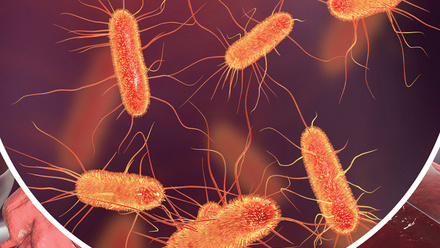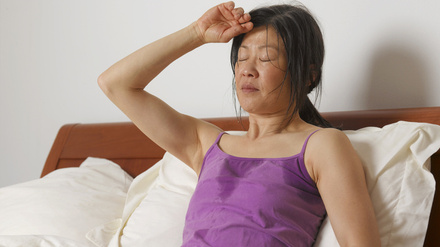Anna Pettit explains how she has seen an increase in complex gut conditions in her caseload.
Becoming a gut health specialist
I graduated from King’s College University London in 2009 with a BSc (Hons) Nutrition and Dietetics. In the last 13 years I have worked across primary and secondary settings in the UK and abroad with a lot of complex patients with chronic conditions. I developed a particular interest around gut health and how improving gut health can impact on health overall, both physically and mentally. As well as working in the NHS part time, I have worked at the Gut Health Clinic since 2021 as a gut specialist dietitian.
A day in the life of a gut health specialist
My daily work caseload may include IBS, IBD, coeliac disease, diverticular disease, long-standing constipation and functional symptoms of bloating, excessive flatulence, and abdominal discomfort. In recent months my caseload of complex gut conditions has been increasing, particularly in relation to Ehlers-Danlos Syndromes (EDS) in my dietetic clinic.
Patients often complain that their symptoms are not taken seriously and often the connection between EDS and problematic gut symptoms is not identified. There is also a risk of IBS misdiagnosis in these cohorts of patients as some gut symptoms are very similar to IBS.
What are Ehlers-Danlos Syndromes?
Ehlers-Danlos Syndromes (EDS) is the umbrella term for a group of genetic disorders of connective tissue, which affects the structure or function of collagen and other connective tissue proteins that act as a ‘scaffold’ to support structures in skin, muscles, ligaments and the gastrointestinal tract. This affects these structures in a way that makes them more fragile, flexible and ‘stretchy’.
There are 13 types of EDS but the hypermobile type of EDS (hEDS) is the most common type that seems to present with gut symptoms. Some research indicates that chronic gastrointestinal discomfort can be found in around 86% of patients with hEDS.
Other types of EDS can also affect the gut anywhere from the upper digestive tract (oesophagus, stomach and duodenum) to the lower digestive tract (small intestine, large intestine and rectum). Issues with the function of the autonomic nervous system that regulates involuntary physiological processes such as digestion is thought to also be common in EDS and may cause additional gut symptoms. A general lack of understanding of EDS can lead to patient suffering for many years and EDS can be very debilitating.
How does EDS affect the gut?
The digestive tract is made up of a lot of connective tissue that is essential for the waves of involuntary constriction and relaxation of the muscles of the digestive tract (peristalsis) to ensure good and effective digestion. EDS results in reduced motility of the gut and increased gut sensitivity as the connective tissue is also present around the nerves of the digestive tract. Bloating is also a very common symptom in people with hEDS and, although more research is needed to identify the exact cause, dysmotility is thought to be a contributing factor.
A general lack of understanding of EDS can lead to patient suffering for many years and EDS can be very debilitating
Small intestinal bacterial overgrowth (SIBO) is something that can also potentially develop due to reduced motility, sluggish bowels and constipation, although as yet there is no definite link between hEDS and SIBO.

Symptoms
Some of the most frequently reported problems in hEDS affecting the upper digestive tract are acid or bile reflux, indigestion, pain or discomfort, nausea, vomiting and early satiety after meals. Delayed gastric emptying can be the cause of early satiety and nausea and, if it is severe, can lead to gastroparesis – a condition that affects the normal spontaneous movement of the muscles (motility) in your stomach, although this is not that common in hEDS and there is no established link between the two.
Evidence suggests that people diagnosed with hEDS may be at a higher risk of having a small hiatus hernia in the oesophagus affecting the oesophageal sphincter (the flap that stops the regurgitation of the stomach contents back into the oesophagus) and thus increasing the chances of suffering from acid reflux and heartburn.
The lower digestive tract problems can result in constipation or diarrhoea and abdominal pain or discomfort. Gut motility is often compromised and sluggish bowels with difficulties in evacuation are reported.
How do we manage gut symptoms in EDS?
Currently there is no cure for EDS so management strategies are based on supportive treatment of symptoms and the prevention of secondary complications. Based on the dietetic assessment, lifestyle changes along with the therapeutic diet low in fermentable carbohydrates (low FODMAP) to reduce bloating, gas, discomfort and diarrhoea may be recommended for a certain period of time. I always recommend the low FODMAP diet is best done under supervision from a registered dietitian as there is a lot to consider in terms of nutritional adequacy and the effect on gut microbiota.
Gut optimisation techniques increasing prebiotic fibre and probiotics may improve gut microbiota composition if there are any imbalances in microbes contributing to the gut issues.
For those with delayed gastric emptying, acid reflux and heartburn, we focus on their eating habits, often with portion size reductions and adjustment of the food textures, as more liquid meals can be better managed. For those with sluggish bowels and constipation, an increase in fibre, fluids and activity is indicated, and if the constipation is not responding to lifestyle and dietary measures, a trial of a prokinetic that stimulates colonic activity may be indicated.
What else is there to consider?
In terms of the prevention of secondary complications involving ligaments and bones, we also focus on bone-friendly vitamins and minerals such as calcium, vitamin D, vitamin K and magnesium, and diet optimisation and supplement use if indicated.
As well as dietary and lifestyle changes, therapies such as cognitive behavioural therapy, specialist pain management, and pelvic floor physiotherapy may also be helpful in management of all types of EDS and are often recommended in conjunction with the dietary recommendations.







